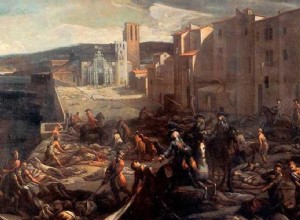It was not the (black) plague of the 14th century, but a later outbreak in the 17th century that, for example, in England killed almost 100,000 people and more than a fifth of the population of London. 3 or 4 days ago I saw an unburied corpse in a coffin on the street... the plague is making us cr




